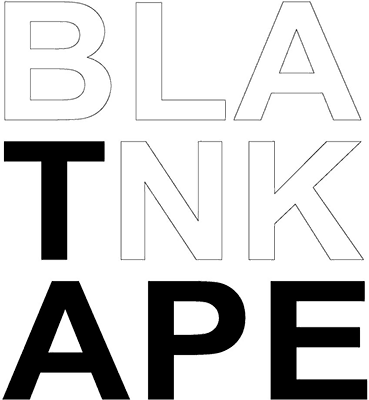INTRO
As convenient and democratic it might be to download music on SoulSeek, LimeWire, uTorrent, or any other data transfer software, some specificities of the analogical era – vinyl, cassette tape – that were carried until the beginning of the digital era – the CD – were lost. This could be exemplified by hidden tracks that could only be found after listening to an entire record. Preceded by a long period of silence (better yet, a long time interval of noises produced by needle-vinyl friction or by magnetic tape rotation), the listener encountered the unexpected.
Yuri Suzuki was intrigued by how music would survive among new generations, due to digitalization. According to him, the vinyl record is the most modern medium in analogical recording technology. “If you think of Edison’s gramophone record, it is clear that records can survive and can be listened to after hundred of years.”, the artist affirmed. Maybe this is the reason records are so important in his works, like in Prepared Turntable. The designer developed a method of allowing the audience to compose by searching and overlapping different passages of a same sound source, resulting in a work that embraces time as an issue. The object is a turntable with five tone arms, and in addition to being displayed, it’s integrates performances by the artist, such as the one shown at Sonar 2009. This kind of practice is strongly related to turntablism, which refers to acts that include interferences related to the use of pickups, generating new sounds. It should not be mistaken as the work of a DJ, although it can include the same action. Sound Chaser functions in a similar way. A minicar with a built-in needle is placed on a rail made from fragments of vinyl records, allowing us to obtain a form of medley or mashup (one track containing bits from various songs, typically musical hits). The work resembles a toy, and functions as a DJ mixing tunes.
With Sound Jewellery, Suzuki literally increased the value of sound by turning it into a piece of jewelry, like a bracelet. This work gained a new version in Brazil. By the end of 2007, the last record factory in South America ceased operations, almost a decade after major Brazilian record companies last distributed content in such format. During this period of time, the market was dominated by CDs, and afterwards, the same market was threatened by the proliferation of mp3. Consequently, the material itself can be truly considered a luxury item. Nevertheless, the vinyl is not only the material. Just like people have names and dates engraved on jewelry, the artist etched sound memories into physical pieces. The laughter of a dear one or an important telephone conversation can be carried by the accessory. What could be understood as sarcasm earned a well-deserved dose of poetry.
In point of fact, the relationship between the listener and music was considerably altered in the past few years. From a material point of view; vinyl records on shelves, heaps of tapes and CDs are virtually centralized in computers. The CD rental shops, gathering places for the Brazilian hipster youth in the 90s, have become useless. The Walkman, Discman and portable radio – a symbol of oldschool hip hop – were massively substituted by mp3 players and mobile phones, fueled by powerful batteries. However, record sales in the United States had significant growth during the phase that anteceded the crisis, although almost half of the vinyl record collectors do not own a reproduction device. CDs became the new target of media speculation, being treated as “endangered” objects. On the streets, iPods are often camouflaged by different models of headphones, and even hidden inside vintage Walkman devices, a trend called retropod. DJs that work with records are highly regarded, and they keep formulating music sets with vinyl record releases.
Albeit the digitalization process enthralled the music world, as well as other sectors, the current times are not inflexible. Different formats can coexist without nullification, and can even function together, in the same device, like pickups that convert records to mp3. An exemplification is iTunes LP. In Apple’s digital music store, it is possible to acquire mp3 albums with the visual advantages of vinyl records. Facts indicate that industries have understood the market’s desire for diversity, and certain fetishism concerning technologies that have been considered obsolete. Even better, industries might have understood the profit potentialities of the market.
Paulo Mendel
curadoria
The Physical Value of Sound was presented on May 2009 at Clear Gallery / Tokyo. The online version presented by BlankTape assembles more pieces than the original version. Other sound-related productions by the artist can be accessed on the videowall, composed by three screens on the right side of the warehouse. A highlight is The Animatic, an installation that utilizes multiple moving image construction techniques to produce an animation.
translation Isabela Alzuguir thanks to Palm Pictures | Cindy Banach | Matizar Filmes | Mariana Ferraz | Made-Up Disease | Felipe Meres | Carolina Apolinário | Giorgio Ronna | Vivian Caccuri | Paulo Ming
São Paulo, Brazil | 2010
